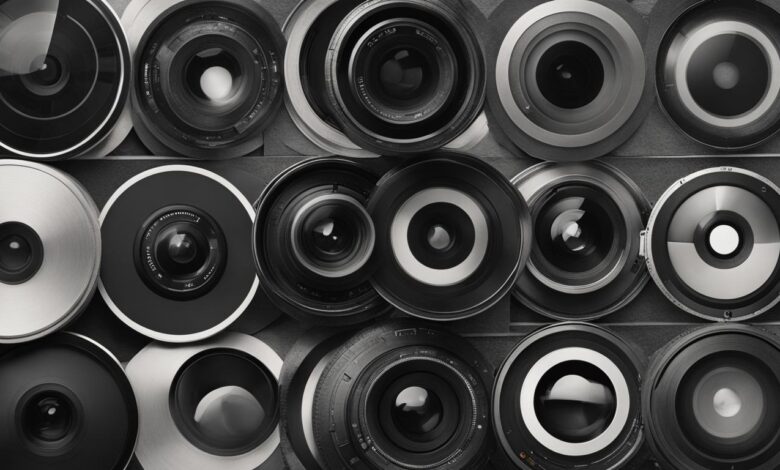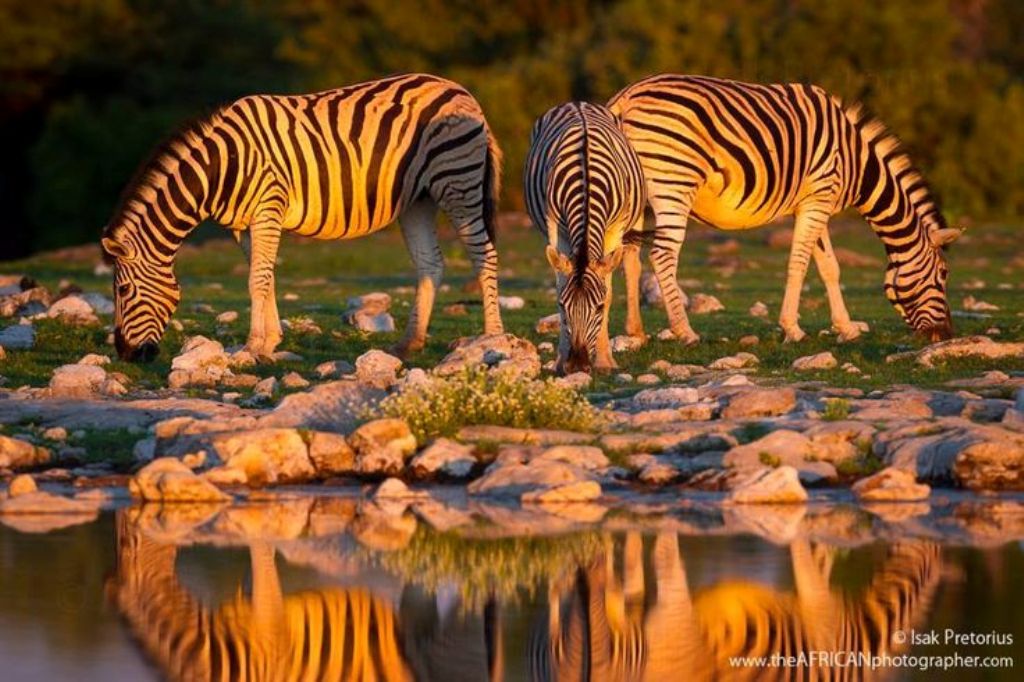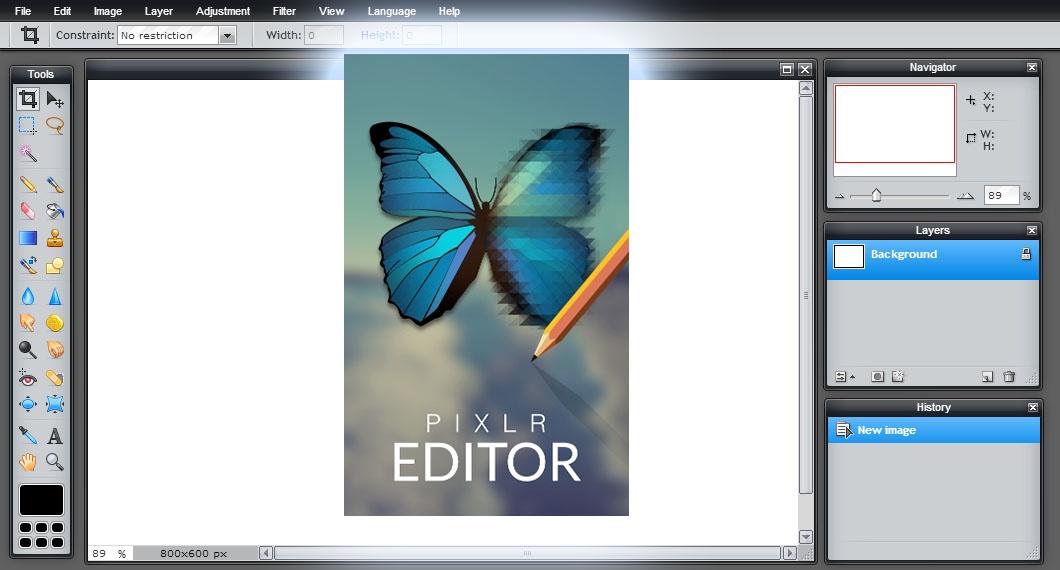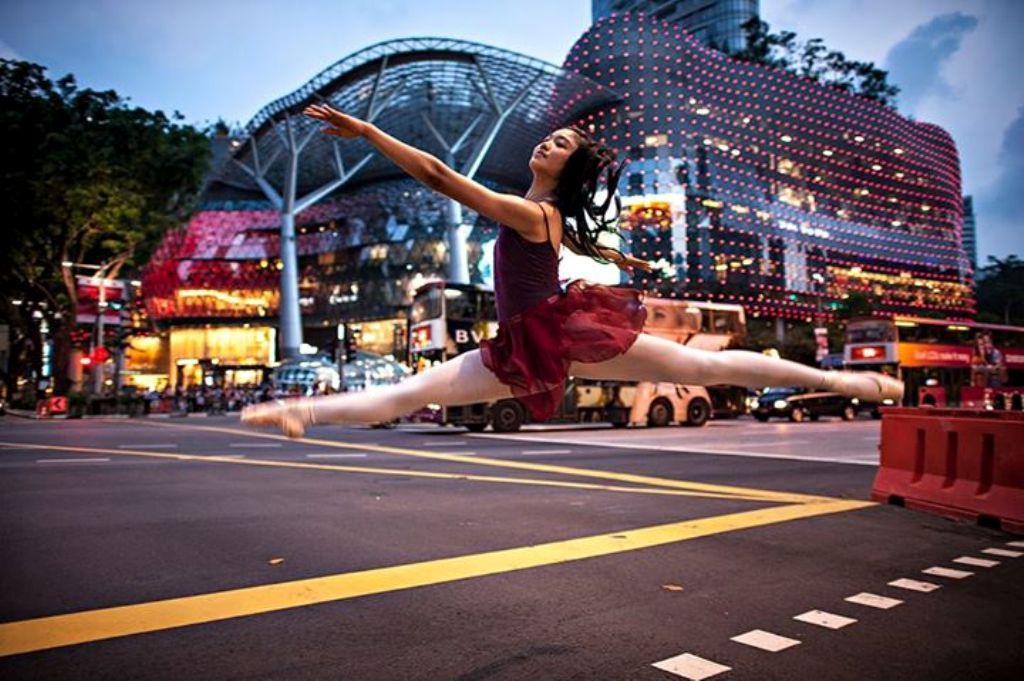
The Photography History: From the First Camera to Now
In this article, I will take you on a journey through the captivating photography history. From its humble beginnings with the invention of the first camera, we will explore the evolution of photography as an art form and the pioneers who shaped its development. We will also delve into the significant milestones that have shaped the industry and the enduring impact photography has had on society.
The history of photography is a fascinating one, with many notable events, people, and technological advancements that have shaped its course. In this article, we will cover it all, from the early cameras and famous photographers to the latest techniques and innovations. Join me as we uncover the history of photography and its impact on our world.
The Origins of Photography
To understand the history of photography, we must first look at its origins. Photography, as we know it today, didn’t just magically appear. It was the result of years of experimentation and the work of numerous photographers.
The invention of photography can be traced back to the early 19th century. The first permanent photograph was taken in 1826 by Joseph Nicéphore Niépce using a camera obscura and a pewter plate coated with bitumen. This process, called heliography, paved the way for the development of photography as we know it.
However, it was Louis-Jacques-Mandé Daguerre, a French painter, who created the first practical photographic process, known as the daguerreotype. This process produced sharp, highly-detailed images on a silver-plated copper sheet. The daguerreotype became popular in the 1840s and was the primary form of photography for the next few decades.
Other inventors and photographers continued to develop new photographic techniques. In 1851, Frederick Scott Archer invented the wet plate collodion process, which allowed for faster exposure times and better image quality. This process replaced the daguerreotype and became the standard photographic process until the 1880s.
The invention of the dry plate process in the 1870s made photography even more accessible and popular. This process used a glass plate coated with a dry emulsion, making it easier to handle and transport than wet plate collodion.
The invention of the first handheld camera, the Kodak camera, in 1888 by George Eastman revolutionized photography. This small, easy-to-use camera was pre-loaded with enough film for 100 exposures, and once the film was used up, the entire camera was sent back to the manufacturer for processing. The Kodak camera made photography available to the masses and ushered in a new era of amateur photography.
Early Forms of Photography
The earliest forms of photography were experiments with light and chemistry. The camera obscura, a device that projected an image onto a flat surface using a pinhole, had been in use since ancient times. In the 16th century, artists used the camera obscura as a drawing aid.
In the late 18th century, experiments with light-sensitive materials began. Thomas Wedgwood and Humphry Davy both experimented with using chemicals to produce images, but their processes were not permanent. It wasn’t until the invention of heliography by Niépce that a permanent image could be produced.
The evolution of photography from these early experiments to the sophisticated digital cameras we have today has been a remarkable journey.
Pioneers of Photography
Throughout the history of photography, there have been many talented individuals who have played a crucial role in shaping the art form. These individuals are often referred to as pioneers or influential photographers, and their contributions have helped to define and expand the field of photography as we know it today.
One of the most famous pioneers of photography is Louis Daguerre, who is credited with inventing the daguerreotype process in 1839. This revolutionary technique involved exposing a silver-coated copper plate to iodine vapors, which made the plate light-sensitive. The plate was then exposed to light in a camera, which created a latent image that was developed using mercury fumes. Daguerre’s invention paved the way for the development of other photographic processes and helped to establish photography as a legitimate art form.
Another influential photographer from the early days of photography is Julia Margaret Cameron, who is known for her portraits of Victorian celebrities and allegorical scenes. Cameron’s works were often criticized for being too emotional and unconventional, but her style and technique have had a lasting impact on the art of photography.
| Famous Pioneers of Photography | Notable Contributions |
|---|---|
| Ansel Adams | Master of landscape photography, developed the zone system |
| Edward Steichen | Pioneered fashion photography, helped to establish photography as a legitimate art form |
| Henri Cartier-Bresson | Credited with creating the concept of the “decisive moment” |
| Dorothea Lange | Captured the struggles of Americans during the Great Depression, helped to establish documentary photography as a genre |
Other notable pioneers of photography include Ansel Adams, Edward Steichen, Henri Cartier-Bresson, and Dorothea Lange, among many others. Each of these individuals brought a unique perspective and style to the field of photography and helped to push the boundaries of what was possible with the medium.
Overall, the pioneers of photography have made significant contributions to the art form and have helped to establish it as a legitimate and respected art form. Their work continues to inspire and influence photographers today, and their legacy will continue to shape the field of photography for years to come.
Milestones in Photography History
The history of photography is marked by significant milestones that pushed the boundaries of what was possible at the time. These milestones shaped the course of photography and influenced the way we capture moments and tell stories forever.
Daguerreotype Invention (1839)
The daguerreotype was the first publicly available photographic process, named after its inventor Louis-Jacques-Mandé Daguerre. This process enabled the creation of highly detailed images on silver-plated copper sheets, allowing for the capture of portrait photographs for the first time ever.
Introduction of Color Photography (1861)
Color photography revolutionized the field, adding a new dimension to photographic storytelling. The first successful color photograph was created by Scottish physicist James Clerk Maxwell, using a technique called three-color separation. This milestone paved the way for color film and the development of the modern-day color photography.
Introduction of 35mm Film (1934)
The 35mm film was a game-changing milestone in the evolution of photography. It was smaller, more portable, and affordable than previous film sizes, making it accessible to a wider audience. The 35mm film also enabled faster shooting and more shots per roll, allowing photographers to capture fleeting moments in time with ease.
Development of Digital Photography (1975)
The invention of the digital camera marked a significant milestone in the history of photography, leading to revolutionary changes in the way we capture and edit images. The first digital camera was invented by Steven Sasson, an engineer at Eastman Kodak. It had a resolution of 0.01 megapixels and recorded images onto a cassette tape. The development of digital cameras has led to new artistic possibilities and has democratized the field, allowing anyone to become a photographer with just a smartphone.
The Rise of Social Media (2000s)
The 2000s saw the rise of social media platforms, allowing photographers to share their work across the globe. Social media platforms like Instagram and Flickr have become an integral part of the photography industry, providing a platform for emerging photographers to showcase their work and connect with like-minded individuals. The democratization of photography has allowed for greater diversity and creativity in the field, making it easier for new voices to be heard.
Evolution of Cameras
Cameras have come a long way since their invention in the early 19th century. The historical evolution of photography is inextricably linked to the development of the camera, as each advancement in technology has led to new photographic possibilities and artistic expressions. In this section, we will explore the significant camera inventions and developments in photography throughout history, including photographic advancements that have made capturing and editing images easier and more efficient.
Early Camera Inventions
The first camera was invented in 1816 by Nicéphore Niépce, a French inventor, but it wasn’t until 1839 that Louis Daguerre, another Frenchman, developed the daguerreotype process, which made photography practical and accessible to the masses. The daguerreotype process involved exposing a polished silver plate to light in a camera obscura and treating the resulting image with mercury vapor to produce a permanent image. This process was widely used until the mid-1850s when the collodion process was introduced.
The Collodion Process
The collodion process, invented in 1851 by Frederick Scott Archer, used a mixture of collodion and chemicals that were poured onto a sheet of glass, creating a wet plate. The plate was then exposed in a camera and developed immediately after exposure. The resulting images were much sharper and had greater detail than the earlier daguerreotypes, and the process remained popular until the 1880s, when gelatin dry plates were introduced.
Gelatin Dry Plates
Gelatin dry plates were introduced in the 1880s and revolutionized photography by allowing photographers to use a plate that was already sensitized to light, eliminating the need to prepare the plate immediately before exposure. This made the process faster and more convenient, and it allowed photographers to capture faster-moving subjects. Gelatin dry plates remained the standard until the 1930s, when roll film was introduced.
Roll Film
Roll film was first introduced by George Eastman in 1884 and became popular in the 20th century with the introduction of the Kodak Brownie, a simple, lightweight camera that was affordable for the average person. Roll film allowed photographers to take multiple shots without having to change plates, making photography even more accessible and widespread.
Digital Imaging
The advent of digital imaging in the late 20th century revolutionized the field of photography once again. By the 1990s, digital cameras had become widely available, and they continue to evolve and improve to this day. Digital imaging allows photographers to take and edit photos on the go, instantly previewing their shots and making adjustments as needed. With digital imaging, photographers no longer need to rely on film or darkroom processes, opening up new creative and technical possibilities.
“Each advancement in technology has led to new photographic possibilities and artistic expressions.”
The evolution of cameras has been a fascinating journey, reflecting the larger story of technological and artistic progress throughout history. As cameras continue to evolve and improve, we can only imagine the new possibilities and creative expressions that will emerge in the future.
Photography Techniques through the Years
From the earliest days of photography, artists and innovators have explored various techniques to capture and create images. In this section, we will examine some of the most significant photographic techniques throughout history, from early forms of photography to the digital age.
The Birth of Photography Techniques
The earliest photography techniques often required long exposures and cumbersome equipment. Daguerreotypes, one of the earliest photographic processes, involved exposing a silver-plated copper plate to light, creating a highly detailed image. However, this process was time-consuming and required proper handling, making it difficult to use in the field.
Cyanotypes, invented by Sir John Herschel in the mid-19th century, involved using a chemical solution to create a blue-and-white print. This process was popular for creating copies of technical drawings and quickly became a favorite of photographers for its unique aesthetic.
The Evolution of Photographic Techniques
As photographic technology continued to advance, so too did the techniques used to capture and manipulate images. With the advent of roll film, photographers had greater flexibility and could take more shots in a shorter amount of time. This led to the rise of street photography and other forms of candid photography.
Color photography was also a major breakthrough, allowing photographers to convey a new level of emotion and realism in their images. Early color techniques such as Autochrome and Kodachrome paved the way for modern color film and digital imaging.
Photographic Techniques in the Digital Age
Today, digital technology has revolutionized the way we take and manipulate photographs. Software tools such as Adobe Photoshop and Lightroom have given photographers unprecedented control over their images, allowing them to adjust and enhance images with incredible precision.
High Dynamic Range (HDR) photography is another popular technique in the digital age, allowing photographers to capture a wider range of light and color in their images. This technique involves taking multiple shots of the same scene at different exposures and then combining them to create a single image with greater detail.
“Photography takes an instant out of time, altering life by holding it still.” Dorothea Lange
The quote by photographer Dorothea Lange highlights the power of photography to capture moments and convey emotion. Throughout history, photographers have used various techniques to tell their stories and create stunning images that continue to resonate with viewers today.
Iconic Photographs in History
Over the course of history, there have been many iconic photographs that have left an indelible mark on our minds. These images have the power to move us, to inspire us, and to challenge our perceptions of the world around us. They represent poignant moments in time, artistic achievements, and historical milestones that have shaped our understanding of the past and informed our vision for the future.
One such photograph is the iconic image of the “Tank Man” taken during the 1989 Tiananmen Square protests in Beijing, China. In this photograph, a lone young man stands in front of a line of tanks, his body blocking their path. This powerful image became a symbol of resistance and defiance against oppression, resonating with people around the world.
Another iconic photograph is “The Afghan Girl,” taken by renowned photographer Steve McCurry in 1984. The photograph shows the striking portrait of a young Afghan girl with piercing green eyes, her face framed by a red headscarf. This image became an emblem of the plight of Afghan refugees and a symbol of hope for those who have suffered the consequences of war and displacement.
Other famous photographers have made their mark in history through their iconic images, such as Ansel Adams and his breathtaking landscape photography, Dorothea Lange and her compelling documentary photography during the Great Depression, and Annie Leibovitz and her stunning celebrity portraits.
These iconic photographs showcase the power of visual storytelling and the enduring impact that photography can have on society. They remind us of the importance of capturing moments in time, preserving memories, and conveying powerful messages through the lens of a camera.
The Importance of Photography in History
Photography has played a vital role in shaping our understanding of history. As the saying goes, a picture is worth a thousand words, and this is particularly true when it comes to historical photography. Through photographs, we can catch a glimpse of what life was like in past eras, witness significant events, and explore the cultural, social, and political movements that have shaped the world we live in today.
Historical photography allows us to see the faces and places of the past, conveying a sense of immediacy and authenticity that cannot be replicated in other forms of media. From the earliest photographic prints to present-day digital images, photographs have served as powerful tools for documenting human experience and preserving memories for future generations.
Perhaps one of the most significant ways in which photography has impacted history is by serving as a vehicle for social change. Many iconic photographs, such as Dorothea Lange’s “Migrant Mother” and Bill Hudson’s “Flower Power,” have become visual symbols of movements, cultural shifts, and political struggles. These images have not only captured the public’s attention but have also helped galvanize support for social and political causes, ultimately shaping the course of history.
Moreover, historical photographs provide valuable insights into the past, allowing us to analyze and interpret cultural, social, and political trends in ways that would be impossible without visual aids. By examining photographs taken throughout history, we can gain a richer understanding of the context in which events occurred, how people thought, and even how they lived.
Therefore, it is clear that photography has played a crucial role in shaping our understanding of history and preserving our collective memory. Without historical photography, our understanding of the past would be limited, and our ability to learn from it would be severely constrained.
Photography Movements and Styles
Throughout the history of photography, different movements and styles have emerged, each with its unique characteristics and artistic objectives. These movements and styles have contributed to the continuous evolution of photography we see today. In this section, I will delve into some of the most prominent photography movements and their mark on the history of photography.
Documentary Photography
Documentary photography emerged in the early 20th century, with photographers capturing everyday life and social issues. This movement aimed to represent reality and often focused on marginalized communities and social injustice. One of the most famous documentary photographers was Dorothea Lange, known for her powerful images of the Great Depression era.
Surrealism
Surrealist photography originated in the 1920s and aimed to explore the subconscious mind and dreams. This movement used techniques such as photomontage and double exposure to create otherworldly images. One of the most influential surrealist photographers was Man Ray, known for his experimental and unconventional work.
Straight Photography
Straight photography, also known as purism, emerged in the 1920s and aimed to capture the objective reality without manipulation or interpretation. This movement emphasized the importance of sharp focus, clean lines, and high contrast. Edward Weston, known for his crisp and precise images of still life and landscapes, was a prominent figure in straight photography.
Conceptual Photography
Conceptual photography emerged in the 1960s and aimed to convey ideas and concepts through images, often using text and performance art. This movement challenged the traditional boundaries of photography and sought to blur the lines between reality and imagination. Cindy Sherman, known for her self-portraits exploring gender and identity, is one of the most famous conceptual photographers.
Postmodern Photography
Postmodern photography emerged in the 1980s and aimed to challenge the traditional notions of art and representation. This movement used techniques such as appropriation, collage, and deconstruction to critique cultural and social norms. One of the most famous postmodern photographers was Barbara Kruger, known for her provocative and politically charged images.
Contemporary Photography
Contemporary photography is a broad term used to describe the current state of photography, which encompasses various styles and movements. With the rise of digital technology, photographers have more creative freedom and access to new tools and techniques. The contemporary photography scene is diverse, ranging from traditional techniques to experimental and boundary-pushing approaches.
Photographic Technology Advancements
Technological advancements have had a profound impact on photography, contributing to its evolution and growth. In this section, I will explore some of the key photographic technology timeline, photography inventions, photography innovations, and developments in photography that have revolutionized the field.
The Invention of the Digital Camera
The introduction of the digital camera represented a major advancement in photographic technology. Unlike film cameras, digital cameras use sensors to capture and store images, allowing photographers to view and edit their work immediately. The first commercially available digital camera was the Apple QuickTake, released in 1994, but it was not until the early 2000s that digital cameras became widely available and affordable.
Development of Image Editing Software
Image editing software has also played a significant role in the evolution of photography. Adobe Photoshop, launched in 1990, remains the most ubiquitous image editing software and has enabled photographers to alter and enhance their images in countless ways. Other software, such as Lightroom and Capture One, have also become popular among photographers.
Introduction of Autofocus
Autofocus technology has made it easier for photographers to capture sharp images, even in challenging lighting conditions. The first autofocus system was introduced by Polaroid in 1972, but it was not until the 1980s that autofocus technology became widely adopted.
Advances in Camera Sensors
The quality of images captured by digital cameras has improved significantly due to the advances in camera sensor technology. In recent years, camera sensors have become larger and more advanced, allowing photographers to capture images with exceptional resolution, dynamic range, and low light performance.
Introduction of Mirrorless Cameras
Mirrorless cameras, which rely on electronic viewfinders rather than mirrors, represent a relatively recent advancement in photographic technology. Mirrorless cameras are typically smaller and lighter than DSLR cameras, making them popular among photographers who value portability and convenience. Mirrorless cameras also offer advantages such as faster burst rates, silent shooting, and improved autofocus.
Photography’s Enduring Impact
As we have explored throughout this article, the history of photography is a rich tapestry woven by the contributions of many photographers, innovators, and industry leaders. But beyond its artistic and technical achievements, photography has had an enduring impact on society and our understanding of the world.
Firstly, photography has played a critical role in documenting history. From early war photography to modern-day photojournalism, photographs have captured pivotal moments that have shaped the course of history. Images of the Vietnam War, the Civil Rights movement, and the 9/11 terrorist attacks have become iconic representations of significant historical moments that have helped shape our collective memory.
Beyond its role in documenting history, photography has also played a significant role in shaping social and cultural narratives. By capturing the diverse faces and experiences of individuals and communities, photography has opened the door to new perspectives and challenged stereotypes. It has also been a powerful tool for social activism and advocacy, with photographs giving voice to marginalized communities and inspiring social change.
Photography has also had a significant impact on various industries, from advertising to fashion to journalism. In advertising, photography has been used to create persuasive and visually striking campaigns that capture consumers’ attention. In fashion, photography is used to showcase products and capture the latest trends. In journalism, photography has been a vital tool for capturing and conveying news stories, enabling journalists to bring the world’s events to life.
Finally, photography has had a profound personal impact, providing a means of expression and a tool for self-discovery. By capturing moments and experiences, photography has allowed individuals to preserve memories and create visual narratives of their lives. Whether through family photo albums or personal social media accounts, photography has become an integral part of our personal stories.
Overall, the importance of photography in history cannot be overstated. From its role in documenting pivotal moments to its impact on social and cultural narratives, photography has been a powerful and enduring force throughout history.
Conclusion
In conclusion, exploring the history of photography has been an exciting journey of discovery. From its origins with the invention of the camera to the current technological advancements, photography has undergone a significant evolution over the centuries. Throughout this article, we have explored the pioneers who laid the foundation for the art form, the milestones that propelled it forward, and the enduring impact it has had on society.
Photography has played a vital role in historical documentation and has become an essential tool for storytelling and artistic expression. It has influenced industries such as journalism, advertising, and fashion and has been a force for cultural and social change.
As we move forward, the future of photography is bright, and the possibilities are endless. The evolution of photographic technology continues to push the boundaries of what is possible, opening up new avenues for artistic expression and creative exploration.
In conclusion, photography remains a captivating art form that will continue to inspire and influence generations to come.
FAQ
What is the history of photography?
The history of photography dates back to the invention of the first camera and has evolved significantly over time. It explores the development of photography as an art form, the pioneers who shaped its progress, and the significant milestones that have influenced the industry.
How did photography originate?
Photography originated from early forms of capturing images, such as camera obscura and the development of photographic techniques. The invention of the camera and the advancements in photographic technology paved the way for the evolution of photography as we know it today.
Who were the pioneers of photography?
Photography was shaped by influential pioneers who made significant contributions to the field. Some famous photographers who left an indelible mark include Ansel Adams, Dorothea Lange, Henri Cartier-Bresson, and Edward Weston, among others.
What are the milestones in photography?
Photography has witnessed important milestones that have propelled the medium to new heights. These milestones range from technological advancements like the invention of color photography and digital imaging to significant events and breakthroughs in the field.
How has the camera evolved over time?
Cameras have undergone a remarkable evolution, from early cumbersome devices to the sophisticated digital cameras we use today. The development of new technologies, advancements in optics, and the integration of digital imaging have revolutionized the way we capture and create images.
What are some photography techniques used throughout history?
Throughout history, various photography techniques have been employed to capture and create images. These techniques include daguerreotypes, wet plate collodion, black and white film photography, and contemporary methods like digital manipulation and post-processing.
What are some iconic photographs in history?
There are numerous iconic photographs that have become symbolic representations of historical moments or artistic achievements. Examples include “Migrant Mother” by Dorothea Lange, “The Afghan Girl” by Steve McCurry, and “Tank Man” by Jeff Widener, among many others.
What is the importance of photography in history?
Photography plays a crucial role in documenting and shaping our understanding of history. It serves as a powerful tool for capturing moments, preserving memories, and conveying narratives. Historical photographs provide a visual record that helps us engage with the past and gain insights into different time periods.
What are photography movements and styles?
Throughout the history of photography, various movements and styles have emerged, each with its unique characteristics and artistic objectives. These movements include documentary photography, surrealism, street photography, conceptual art, and many others.
How have technological advancements impacted photography?
Technological advancements have had a profound impact on photography, pushing the boundaries of what is possible in the field. Inventions and innovations such as color photography, autofocus systems, and digital imaging have revolutionized the way photographers capture and manipulate images.
What is the enduring impact of photography?
Photography has an enduring impact that extends beyond its artistic significance. It has influenced various industries, including journalism, advertising, fashion, and more. Photography has the power to shape public opinion, evoke emotions, and document social and cultural changes over time.















